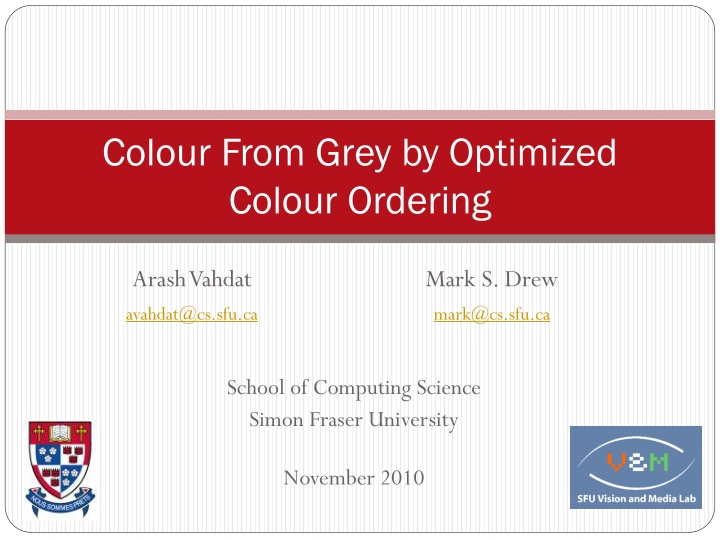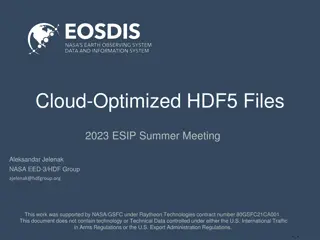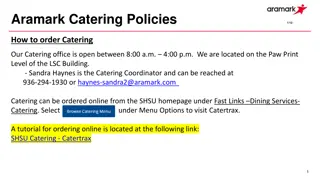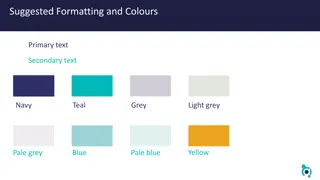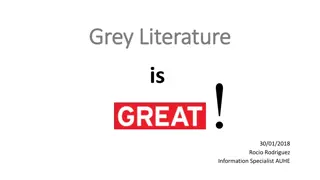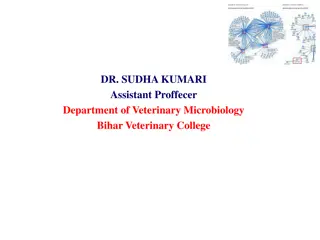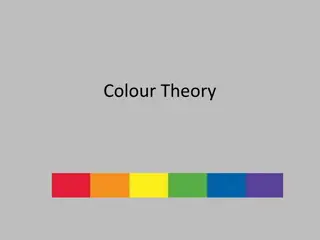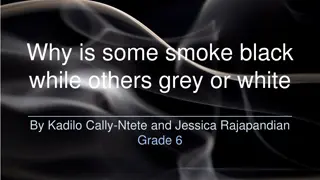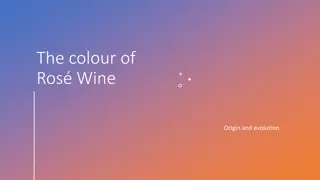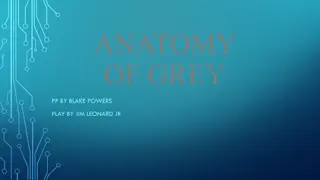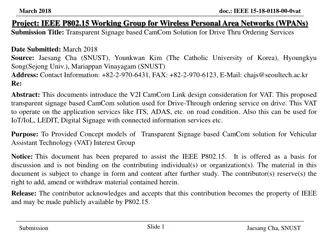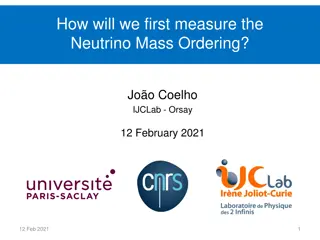Optimized Colour Ordering for Grey to Colour Transformation
The research discusses the challenge of recovering a colour image from a grey-level image efficiently. It presents a solution involving parametric curve optimization in the encoder and decoder sides, minimizing errors and encapsulating colour data. The Parametric Curve maps grayscale values to colour points in different regions of colour space, considering perceptual colour differences in CEILAB Colour space.
Download Presentation

Please find below an Image/Link to download the presentation.
The content on the website is provided AS IS for your information and personal use only. It may not be sold, licensed, or shared on other websites without obtaining consent from the author.If you encounter any issues during the download, it is possible that the publisher has removed the file from their server.
You are allowed to download the files provided on this website for personal or commercial use, subject to the condition that they are used lawfully. All files are the property of their respective owners.
The content on the website is provided AS IS for your information and personal use only. It may not be sold, licensed, or shared on other websites without obtaining consent from the author.
E N D
Presentation Transcript
Colour From Grey by Optimized Colour Ordering ArashVahdat avahdat@cs.sfu.ca Mark S. Drew mark@cs.sfu.ca School of Computing Science Simon Fraser University November 2010
Outline Problem definition Grey to ColourTransformation Our Solution Parametric Curve Optimization Results Conclusion 2
Problem Definition The problem is to recover colour image from grey level image using the minimum amount of information. ( + extra information ) Decoder Side Encoder Side 3
Problem Definition- Cont Our Problem Our Problem Colorization Problem Colorization Problem * Images from Drew & Finlayson (ICIP 08) ( + extra information ) Colour image at encoder side. No user interaction. No colour image as input. Colour hints are provided by human. 4
Colour from Grey is Hard! There are many colours that can be assigned to a single grey level value. e.g., simple definition from Multimedia: Y = 0.299 R + 0.578 G + 0.114 B u=(0.299,0.587,0.114) Y RGB to Grey G B R 5
Solution Assume each grey level value represents particular fixed point in colour space. c Encoder: Colour to Grey For each pixel in colour image we assign grey value of closest fixed point in colour space as its grey value. d g+1 b a g G B g-1 (rd ,gd ,bd ) g g-1 R Decoder: Grey to Colour For each grey value use designated colour for that value. RGB Grey ra ,ga ,ba rb ,gb ,bb rb ,gb ,bb g-1 g (ra ,ga ,ba ) g-1 g+1 6
Problems Our Solution: A Parametric Curve Both procedures in Encoder and Decoder add error to recovered colour image. (rd ,gd ,bd ) g g-1 (ra ,ga ,ba ) minimize error by tuning parameters We need to encapsulate colour lookup table with the data, which is overhead. attach a few parameter 7
Parametric Curve: C(g) : maps grayscale values to colour points. The curve should traverse different regions of colour space. perceptual colour difference is reflected well in CEILAB Colour space. u=(0.299,0.587,0.114) c c g+1 g+1 b a b g g G a L* g-1 B g-1 b* R a * 8
Optimization Colour to Grey: for pixel p with colour (p) approximated grey scale value is: Grey to Colour: use the corrospondonding colour point on the curve. Minimize Error: 10
Results grey level image input image our recovered colour image our grey level image 11
Results L* b* a* Gamut encompassed by parametric curve Ordered Colours along the curve GIF palette 12
Results GIF our method 4 bits 3 bits 3 bits 4 bits 8 bits 6 bits 6 bits 8 bits 13
Results our method GIF 3 bits 4 bits 3 bits 4 bits 8 bits 6 bits 8 bits 6 bits 14
Results grey image input image Colour output with 4 bpp Colour output with 8 bpp 15
Results grey image input image Colour output with 4 bpp Colour output with 8 bpp 16
CIELAB errors Grey image Colour image 17
Conclusions We propose a novel method to reconstruct colour from greyscale images, by optimizing a mapping from greyscale to colour using a parametric curve. Almost always, grey version is better than GIF. The colour image has comparable or lower error especially for low bitrate. Future work: non-constant quantization rate. different curve form. 18
Questions? Thank you. Thanks! To Natural Sciences and Engineering Research Council of Canada 19
